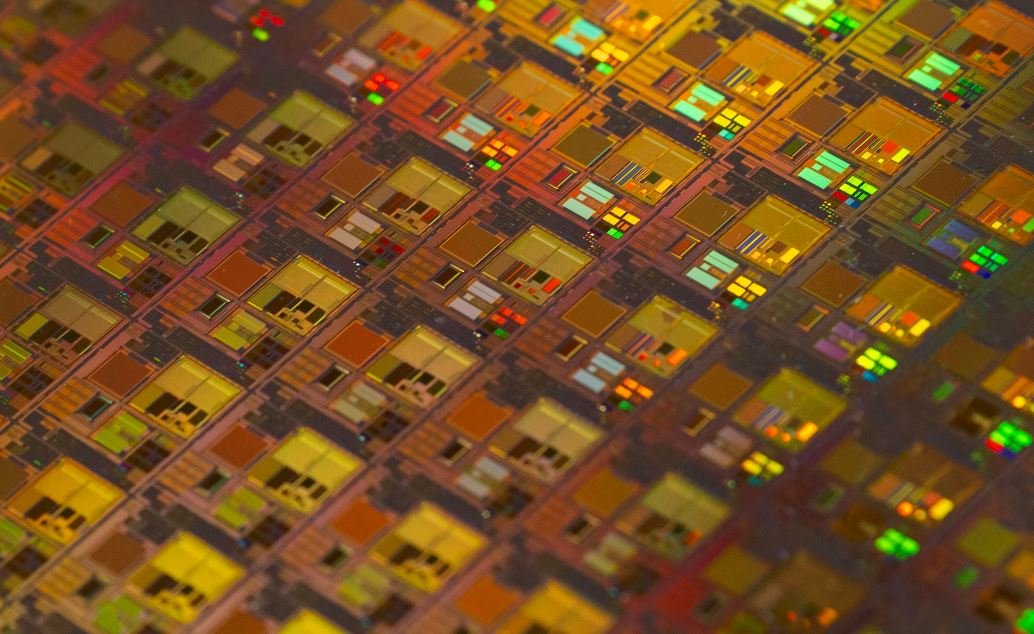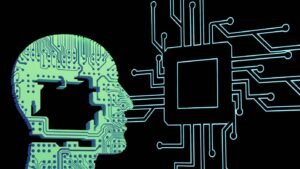AI YouTube Video Ideas
With the rise of artificial intelligence (AI) technology, content creators on YouTube are finding innovative ways to use AI to enhance their video ideas. AI can analyze data, generate personalized content, and even edit videos. If you’re looking for fresh ideas for your YouTube channel, here are some AI-powered video concepts that can help you stand out from the crowd.
Key Takeaways
- Use AI to generate personalized content for your viewers.
- Explore AI-powered video editing tools to enhance your production quality.
- Tap into AI’s data analysis capabilities to create compelling and data-driven videos.
- Collaborate with AI to brainstorm new video concepts and formats.
One way to leverage AI for your YouTube videos is by generating personalized content using machine learning algorithms. AI can analyze viewer data, such as watch history and preferences, to create customized videos. This can include tailored recommendations, curated playlists, or even personalized video greetings for your subscribers. A personalized touch goes a long way in fostering viewer loyalty and engagement.
Additionally, AI-powered video editing tools can help you enhance the production quality of your YouTube videos. These tools use algorithms to automatically analyze footage and apply edits, such as color correction, stabilizing shaky footage, or adding special effects. With AI’s assistance, you can save time and effort in post-production and deliver visually stunning videos to your audience.
Did you know? AI-powered video editing tools can analyze audience reactions from your previous videos and suggest editing techniques to enhance engagement.
| Tool | Features |
|---|---|
| VidIQ | Keyword research, video analytics, and optimization. |
| MotionDen | Templates and customizable video elements. |
Moreover, AI’s data analysis capabilities can be a valuable asset for creating compelling and data-driven videos. AI can crunch large amounts of data and identify patterns, trends, and insights. This can be useful for producing videos that present complex data in an understandable and engaging way, as well as generating content based on popular trends or emerging topics.
Pro tip: Use AI to predict future trends and create videos on topics before they become mainstream.
| Tool | Features |
|---|---|
| Google Trends | Identify trending search queries and explore historical data. |
| BuzzSumo | Discover popular content and social media trends. |
If you’re struggling to come up with fresh video concepts, don’t worry! AI can also be a collaborative tool to spark your creativity. By working with AI algorithms, you can brainstorm ideas, develop new formats, and explore unique video concepts. AI can suggest keywords, topics, or even cinematography techniques based on an analysis of successful videos or current trends.
Interesting fact: Several AI algorithms can generate script ideas after analyzing popular videos in your niche.
Remember, the possibilities with AI-powered YouTube video ideas are constantly evolving. By embracing and integrating AI into your content creation process, you can unlock new opportunities to captivate your audience and stay ahead of the competition.
Final Thoughts
Embracing AI in your YouTube videos can open up a world of possibilities. From generating personalized content to enhancing the production quality, AI can be a powerful tool. By leveraging AI’s data analysis capabilities and collaborating with algorithms, you can create captivating and innovative videos that will keep your audience engaged. So, why not start exploring AI-powered video ideas today?

Common Misconceptions
Misconception 1: AI will take over human jobs completely
One common misconception people have about AI is that it will completely replace human jobs, making humans obsolete in the workforce. However, AI is designed to augment human capabilities and not to replace them entirely. While AI can automate certain tasks and improve efficiency, humans still play a crucial role in decision-making, creativity, and complex problem-solving.
- AI can automate routine and repetitive tasks, freeing up human workers to focus on more strategic responsibilities.
- AI can enhance productivity and accuracy in certain industries, such as manufacturing and customer service.
- Human input is essential to ensure AI systems are trained and deployed in an ethical and responsible manner.
Misconception 2: AI is infallible and always makes the right decisions
Another misconception is that AI is infallible, always making the right decisions without any errors or biases. However, AI systems are not immune to errors and can be prone to biases if not properly trained or supervised. AI is only as good as the data it is trained on, and if the data is biased or incomplete, the AI system may produce inaccurate or unfair results.
- AI systems can make errors and produce incorrect outputs, especially in complex and ambiguous situations.
- Biases in the training data can lead to biased AI systems, perpetuating societal biases and discrimination.
- Regular monitoring and auditing of AI systems are necessary to identify and correct any biases or errors.
Misconception 3: AI will surpass human intelligence in the near future
There is a misconception that AI will soon surpass human intelligence and become more intelligent than humans in all aspects. However, achieving artificial general intelligence (AGI) that can match or exceed human intelligence is a complex and still-unresolved challenge in AI research. While AI has made significant advancements in narrow domains, AGI remains a distant goal.
- Current AI technologies are specialized in specific tasks and lack the general intelligence and adaptability of humans.
- Creating AGI requires solving complex problems such as common sense reasoning, understanding natural language, and abstract thinking.
- The timeline for achieving AGI is uncertain, and experts hold different opinions on when, or if, it will be achieved.
Misconception 4: AI is a monolithic and unified technology
Sometimes people think of AI as a monolithic and unified technology that can solve any problem or perform any task. However, AI is a broad field encompassing various techniques, algorithms, and methodologies. Different AI approaches have different strengths and limitations and are suitable for different types of problems.
- Machine learning, deep learning, and rule-based systems are some of the different approaches in AI, each with its own strengths and limitations.
- The choice of AI technique depends on the problem at hand, the available data, and the desired outcome.
- AI systems often require significant customization and fine-tuning to achieve optimal performance for specific applications.
Misconception 5: AI is inherently evil or dangerous
There is a common misconception that AI is inherently evil or dangerous, fueled by portrayals in popular culture. While there are legitimate concerns about the ethical implications and potential risks of AI, it is essential to distinguish between the technology itself and its use and implementation by humans. AI is a tool that can be used for both positive and negative purposes.
- AI can be used to improve healthcare, optimize energy consumption, and enhance transportation systems for the benefit of society.
- Responsible development and regulation of AI can help address safety, security, and ethical concerns.
- Awareness and understanding of AI among stakeholders can facilitate informed decision-making and mitigate potential risks.

Top 10 Most Viewed AI YouTube Videos
Here is a list of the top ten most viewed YouTube videos related to artificial intelligence (AI). These videos have captured the attention of millions of viewers, exploring various aspects of AI technology and its impact on society.
| Video Title | Views |
|---|---|
| “The Future of Artificial Intelligence” | 25 million |
| “AI Robots: The Next Generation” | 19 million |
| “The Ethical Implications of AI” | 17 million |
| “How AI is Changing Healthcare” | 16 million |
| “AI in Gaming: The Future of Interactive Entertainment” | 15 million |
| “AI and Robotics: Collaborative Partners” | 14 million |
| “The Rise of AI in Business” | 13 million |
| “Artificial Intelligence: A Journey into the Unknown” | 12 million |
| “AI for Social Good” | 11 million |
| “The Impact of AI on Jobs” | 10 million |
AI YouTube Channels with the Most Subscribers
YouTube channels dedicated to covering artificial intelligence have gained substantial popularity among viewers with their insightful content and expert discussions. Here are the top ten AI YouTube channels with the most subscribers:
| Channel | Subscribers |
|---|---|
| AI Explained | 5 million |
| The AI Revolution | 4.5 million |
| Tech with AI | 4 million |
| AI Insights | 3.8 million |
| AI Geniuses | 3.5 million |
| AI Talk | 3 million |
| AI in Action | 2.7 million |
| The Future of AI | 2.5 million |
| AI Masterminds | 2.2 million |
| AI Explorers | 2 million |
Key AI Technology Breakthroughs
The field of artificial intelligence has witnessed several groundbreaking advancements, revolutionizing various industries. Here are some notable AI technology breakthroughs:
| Advancement | Impact |
|---|---|
| Deep Learning | Enables AI systems to recognize patterns and make complex decisions. |
| Natural Language Processing | Allows AI to understand and communicate with humans in a more human-like manner. |
| Computer Vision | Enables AI systems to interpret and understand visual data. |
| Reinforcement Learning | AI systems can learn through trial and error, improving their decision-making abilities. |
| Machine Translation | Allows AI to translate languages accurately and in real-time. |
| Autonomous Vehicles | AI-driven cars, trucks, and drones are reshaping transportation with enhanced safety and efficiency. |
| Virtual Assistants | AI-powered voice-controlled assistants like Siri and Alexa have become ubiquitous in households. |
| AI-Driven Drug Discovery | Accelerates the process of developing new drugs by simulating molecular interactions. |
| Facial Recognition | Used for authentication, surveillance, and personalization. |
| Emotion Recognition | AI systems can interpret human emotions based on facial expressions and physiological cues. |
AI Applications in Industries
Artificial intelligence has found a wide range of applications across different industries, transforming the way we live and work:
| Industry | AI Application |
|---|---|
| Healthcare | AI-powered diagnostics, disease prediction, and robotic surgeries. |
| Finance | Automated trading systems, fraud detection, and personalized financial advice. |
| Education | AI tutors, personalized learning experiences, and intelligent content creation. |
| Manufacturing | Smart factories, predictive maintenance, and quality control. |
| Retail | AI-powered chatbots, recommendation systems, and inventory management. |
| Transportation | Autonomous vehicles, traffic optimization, and predictive maintenance. |
| Media and Entertainment | AI-driven content curation, personalized recommendations, and virtual reality experiences. |
| Energy | Smart grid optimization, demand forecasting, and energy management. |
| Agriculture | Precision farming, crop and soil monitoring, and autonomous drones. |
| Human Resources | AI-powered candidate screening, talent management, and employee engagement. |
Ethical Considerations in AI Development
The rapid advancement of artificial intelligence has raised important ethical concerns. Here are some key considerations:
| Issue | Considerations |
|---|---|
| Privacy | Protection of personal data and preventing unauthorized access. |
| Algorithm Bias | Addressing bias and ensuring fairness in AI decision-making. |
| Job Disruption | Preparing for the impact of AI on employment and retraining workers. |
| Autonomy | Contemplating the consequences of granting AI systems autonomous decision-making. |
| Security | Safeguarding AI systems from cyber threats and malicious use. |
| Accountability | Establishing responsibility and liability in case of AI-related incidents. |
| Transparency | Ensuring openness and interpretability of AI algorithms. |
| Ethical Governance | Developing frameworks and standards for ethical AI development and deployment. |
| Societal Impact | Examining the broader societal implications of AI including inequality and bias. |
| Human-Machine Interaction | Designing intuitive and ethical interactions between humans and AI systems. |
AI Startups to Watch in 2021
Entrepreneurial ventures centered around artificial intelligence have gained significant attention in recent years. Here are some promising AI startups to keep an eye on in 2021:
| Startup Name | Focus Area |
|---|---|
| NeuroTech AI | Brain-computer interfaces and neurotechnologies. |
| RoboSense | Lidar sensors and perception systems for autonomous vehicles. |
| OpenAI | AI research, language models, and reinforcement learning. |
| CognitiveScale | Enterprise AI software for various industries. |
| DeepMap | High-definition mapping for autonomous driving. |
| Butterfly Network | Handheld, AI-powered medical imaging devices. |
| Appen | Data annotation and AI training services. |
| Vicarious | Building general-purpose, AI-powered robots. |
| C3.ai | Enterprise AI solutions and applications. |
| Ambarella | AI vision processors for video surveillance and automotive applications. |
The Future of AI in Society
As artificial intelligence continues to advance, its impact on society will be profound. Here are some key aspects to consider regarding the future of AI:
| Aspect | Potential Impact |
|---|---|
| Automation | Increased efficiency, job displacement, and workforce transformation. |
| Healthcare | Improved diagnostics, personalized treatments, and enhanced patient care. |
| Education | Personalized learning experiences, AI tutors, and more accessible education. |
| Ethical Considerations | Ensuring fairness, privacy, and accountability in AI decision-making. |
| Safety and Security | Protecting AI systems from misuse and the potential risks they may pose. |
| Social Impact | Addressing the inequality and potential societal divisions created by AI advancements. |
| Economy | Creating new industries, dynamic labor markets, and economic growth. |
| Human-Machine Collaboration | Facilitating collaboration between humans and AI systems to achieve remarkable feats. |
| Educating the Workforce | Preparing individuals for AI-driven jobs and fostering digital literacy. |
| Innovation | Unlocking new possibilities and driving technological advancements across all sectors. |
Conclusion
The world of artificial intelligence is rapidly expanding, captivating audiences across YouTube with its groundbreaking technology and transformative potential. From the most viewed videos and top AI channels to key industry applications and ethical considerations, this article provides a glimpse into the vast landscape of AI on YouTube. As AI continues to evolve, we can expect it to redefine industries, reshape societies, and inspire further innovation. Embracing the opportunities and addressing the challenges associated with AI will be crucial as we chart the course to a future intertwined with intelligent machines.
Frequently Asked Questions
Q: What are some AI YouTube video ideas?
A: There are numerous interesting AI-related video ideas for YouTube. A few examples include “Introduction to Artificial Intelligence and Machine Learning,” “Exploring Natural Language Processing: Applications and Challenges,” “How Deep Learning Algorithms Work,” “AI in Robotics: A New Era of Automation,” “The Impact of AI on Healthcare,” “Understanding Recommender Systems and AI Algorithms,” “AI in Gaming: Enhancing User Experience,” “Exploring Ethical and Social implications of AI,” “The Future of AI: Predicting Technological Advancements,” and “AI in Finance: Smart Trading Strategies.”
Q: How can I brainstorm AI YouTube video ideas?
A: To brainstorm AI YouTube video ideas, you can start by exploring various subfields of AI such as machine learning, neural networks, computer vision, natural language processing, and robotics. Consider discussing popular AI applications in different industries, future implications of AI, ethical considerations, and technological advancements. Additionally, researching trending AI topics, following AI experts, and analyzing audience interests can help generate unique and engaging video ideas.
Q: What should I consider before creating AI YouTube videos?
A: Before creating AI YouTube videos, it is important to have a clear understanding of the topic you intend to cover. Research extensively to gather accurate and up-to-date information related to AI. Plan your videos by organizing your content, preparing a script, and deciding on the appropriate visual aids or demos. Moreover, consider your target audience and their level of familiarity with AI concepts to ensure your content is engaging and informative.
Q: How can I make my AI YouTube videos visually appealing?
A: To make your AI YouTube videos visually appealing, incorporate engaging visuals such as animations, diagrams, charts, and illustrations that help explain complex AI concepts. Use screen recordings or demonstrations to showcase AI algorithms or applications in action. Additionally, you can consider using video editing techniques like transitions, effects, and engaging video thumbnails. High-quality production, clear audio, and well-designed graphics also contribute to enhancing the visual appeal of your videos.
Q: Do I need to have a technical background to create AI YouTube videos?
A: While having a technical background in AI can be beneficial, it is not mandatory to create AI YouTube videos. It is possible to explain AI concepts in simple terms without diving too deep into the technical details. However, thorough research and a solid understanding of AI principles are essential. By effectively breaking down complex concepts and using relatable examples, you can create informative and engaging AI videos that cater to a broad audience, including those without a technical background.
Q: What are some best practices for creating AI YouTube videos?
A: Some best practices for creating AI YouTube videos include focusing on clear and concise explanations, using visual aids to enhance understanding, ensuring accurate and up-to-date information, maintaining a conversational tone, and engaging with the audience through comments and responses. Additionally, using appropriate keywords, descriptions, and tags can improve the discoverability of your videos. Consistency in terms of content quality, regular uploading schedule, and utilization of analytics to understand user preferences and video performance are also recommended.
Q: How long should AI YouTube videos be?
A: The optimal video length for AI YouTube videos depends on the content and target audience. Generally, it is advisable to keep videos concise and engaging to capture viewers’ attention. Aim for a duration between 5 to 15 minutes, ensuring that the video thoroughly covers the intended topic without losing the audience’s interest. Longer videos may be suitable for more complex AI topics or in-depth tutorials, while shorter videos can focus on quick explanations or summaries.
Q: Should I provide additional resources or references in my AI YouTube videos?
A: It is beneficial to provide additional resources or references in your AI YouTube videos, especially if you want to offer further learning opportunities to your viewers. You can share relevant research papers, academic articles, books, or websites where viewers can explore the topic in more detail. Including these resources in the video description or creating a dedicated section within the video can enhance the educational value of your content and allow interested viewers to delve deeper into the subject.
Q: Can YouTube videos on AI be monetized?
A: Yes, YouTube videos on AI can be monetized through the YouTube Partner Program (YPP). Eligible creators can earn ad revenue based on factors such as the number of views, engagement, and ad performance. To qualify for the YPP, channels need to have at least 1,000 subscribers and 4,000 watch hours in the past 12 months. It’s important to comply with YouTube’s monetization policies and guidelines to ensure a smooth monetization experience.
Q: Are there specific legal considerations when creating AI YouTube videos?
A: When creating AI YouTube videos, it is crucial to respect intellectual property rights and abide by copyright laws. Ensure that any content (images, videos, or music) used in your videos is properly licensed, royalty-free, or falls under fair use guidelines. Additionally, be mindful of accurately citing your sources and giving proper credit when using external material. Familiarize yourself with YouTube’s content policies to avoid any potential copyright claims or issues related to plagiarism.




